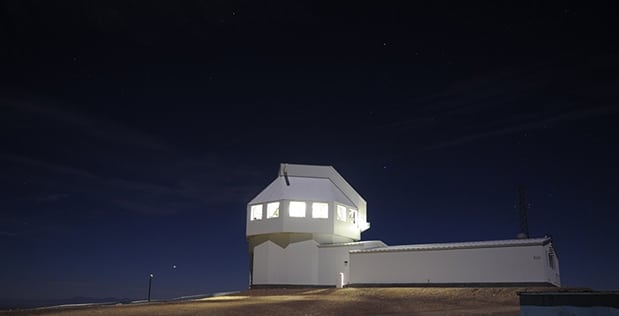Latest News
[Via Satellite 10-19-2016] The United States Defense Advanced Research Projects Agency (DARPA) is transferring ownership of the Space Surveillance Telescope (SST) to U.S. Air Force Space Command (AFSPC) for use in Space Situational Awareness (SSA). The Air Force plans to operate the telescope in Australia jointly with the Australian government following relocation from New Mexico.
SST can view as many as 10,000 objects in the night sky at a time down to the size of a softball. According to DARPA, the telescope uses the most steeply curved primary telescope mirror ever made, enabling the collection of more light to see images across a wider field of view than any other space surveillance telescope. SST is the largest telescope to ever use a Mersenne-Schmidt design, which enables much more compact construction than traditional telescopes, according to the agency. The optical telescope can search an area larger than the continental United States in seconds and survey the entire geosynchronous belt within its field of view — one quarter of the sky — multiple times in one night.
SST also uses the first curved Charged Coupled Device (CCD) camera — a device needed to record images from such highly curved mirrors without distortion. DARPA claims the camera has the fastest telescope camera shutter in the world and is able to take thousands of pictures a night. In recent months, and in preparation for SST’s move to Australia, DARPA has upgraded the camera, faint-object detection algorithms, and search speed to make it even more effective.
Along with tracking objects around the Earth, NASA also uses SST to monitor asteroids and other Near-Earth Objects (NEOs). The instrument has discovered 3,600 new asteroids and 69 NEOs, including four that carry a risk of possibly hitting the Earth. NASA and the scientific community will continue to have access to SST while under Air Force control.
Stay connected and get ahead with the leading source of industry intel!
Subscribe Now